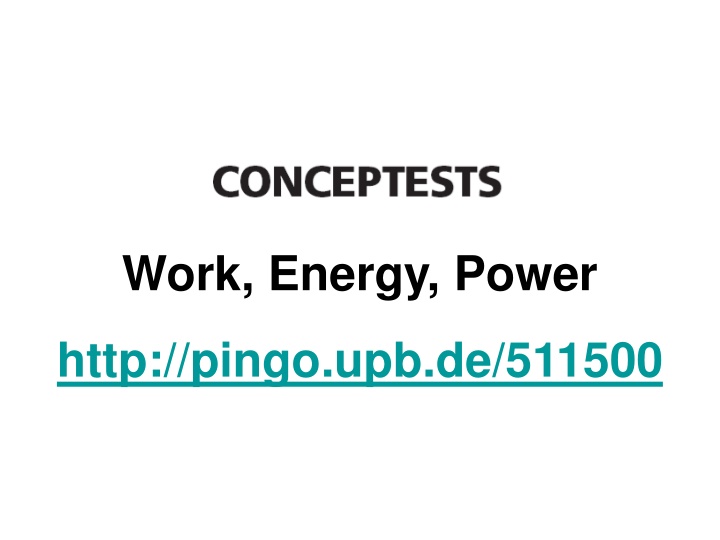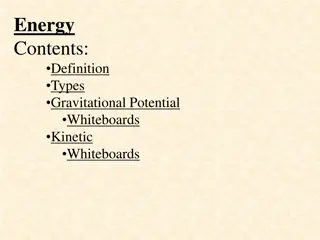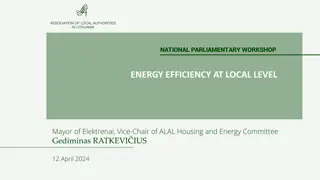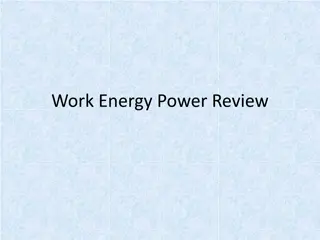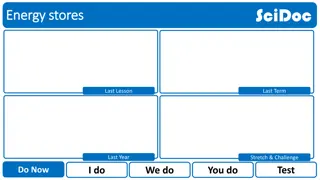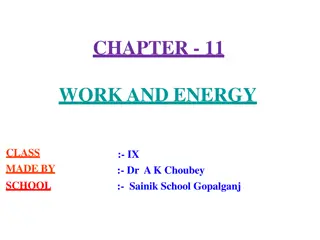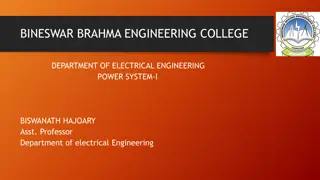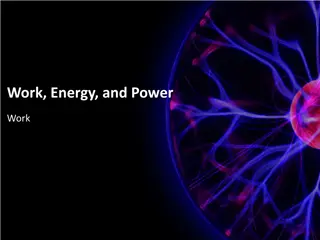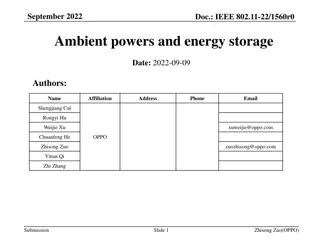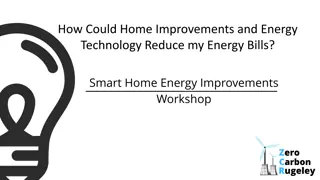Work, Energy, and Power
Delve into the concepts of work, energy, and power through engaging content and concept tests. Explore kinetic energy comparison, potential energy scenarios, and conservation of energy principles. Enhance your knowledge in physics with visual aids and explanations.
Download Presentation

Please find below an Image/Link to download the presentation.
The content on the website is provided AS IS for your information and personal use only. It may not be sold, licensed, or shared on other websites without obtaining consent from the author.If you encounter any issues during the download, it is possible that the publisher has removed the file from their server.
You are allowed to download the files provided on this website for personal or commercial use, subject to the condition that they are used lawfully. All files are the property of their respective owners.
The content on the website is provided AS IS for your information and personal use only. It may not be sold, licensed, or shared on other websites without obtaining consent from the author.
E N D
Presentation Transcript
Work, Energy, Power http://pingo.upb.de/511500
ConcepTest 1: Kinetic energy Car #1 has twice the mass of car #2, but they both have the same kinetic energy. How do their speeds compare? 1. 2 v1 = v2 2. 2 v1 = v2 3. 4 v1 = v2 4. v1 = v2 5. v1 = 2 v2
ConcepTest 1: Kinetic energy Car #1 has twice the mass of car #2, but they both have the same kinetic energy. How do their speeds compare? 2. 2 v1 = v2 Kinetic energy is proportional to the mass and proportional to the square of the velocity. Since the mass of car #1 is twice the mass of car #2, the square of the velocity of car #2 must be twice the square of the velocity of car #1. Hence, the velocity of car #2 must be 2 times the velocity of car #1.
ConcepTest 2: Potential energy You push a box halfway up a ramp, so that it has potential energy equal to Z. If you push the box all the way up the ramp, the potential energy will be 1. equal to Z. 2. greater than Z, but less than 2 Z. 3. equal to 2 Z. 4. one-half Z. 5. impossible to determine
ConcepTest 2: Potential energy You push a box halfway up a ramp, so that it has potential energy equal to Z. If you push the box all the way up the ramp, the potential energy will be 3. equal to 2 Z. The gravitational potential energy is proportional to the mass and to the height. Since the mass is fixed and the height is doubled, the potential energy is also doubled.
ConcepTest 3: Conservation of energy Two marbles, one twice as heavy as the other, are dropped to the ground from the roof of a building. For these small marbles, air resistance is negligible. Just before hitting the ground, the heavier marble has 1. as much kinetic energy as the lighter one. 2. twice as much kinetic energy as the lighter one. 3. half as much kinetic energy as the lighter one. 4. four times as much kinetic energy as the lighter one. 5. impossible to determine
ConcepTest 3: Conservation of energy Two marbles, one twice as heavy as the other, are dropped to the ground from the roof of a building. For these small marbles, air resistance is negligible. Just before hitting the ground, the heavier marble has 2. twice as much kinetic energy as the lighter one. Since they start out at the same height, the heavier marble starts out with twice the gravitational potential energy as the lighter one. Since potential energy is proportional to mass, the heavier marble will lose twice the amount of potential energy as the lighter one. Thus, it ends up with twice the kinetic energy.
